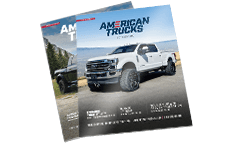
How to Shop for the Best Cabin Air Filters
Cabin air filters are mostly found on late-model vehicles, and they clean the air that comes into your cockpit through the ventilation, heating and air conditioning system. These filters usually catch pollen, dust and other airborne materials, which is especially beneficial if you or your passengers have allergies. They also reduce the smell of unpleasant outdoor odors from filtering into your cabin.
The majority of cabin air filters feature a pleated paper construction using different filtration media. While some use miniature paper filters that are similar to that of your vehicle's intake system, others include a cotton and paper blend. And, there are others that feature a shaped cotton filter in a cartridge. Gaining even more popularity are washable, reusable cabin air filters. Similar to your engine air filter, these reusable filters can be cleaned and reinserted for lifetime use.
How to Install a K&N Cabin Air Filter
There are two general categories when it comes to cabin air filters. Activated charcoal filters are designed to filter out odors and harmful gases, and they're useful for drivers who frequently navigate through gridlock traffic.
Particulate filters are designed to filter out bacteria, dust, pollen, mold spores, and other pollutants. While activated charcoal filters can cost more than their particulate counterparts, drivers who experience heavy-duty urban traffic or vehicle odor problems may find them to be a better solution.
As a general guideline, cabin air filters should be replaced every 12,000 miles (or annually), but this also depends on your driving conditions and how often you use your vehicle. If you do city driving on a regular basis, you can probably go longer between cabin air filter replacements than a driver who lives in a country environment and frequently tears up dusty dirt roads. However, if you live in an urban area that has poor air quality or drive regularly in heavy traffic, you may have to replace your cabin air filter more often — every six months instead of every 12. Check the maintenance schedule in your owner’s manual to see what's recommended for your specific vehicle.
Signs that you need to replace your cabin air filter include persistent bad odors in your cockpit and reduced airflow. Also, if you turn up the fan and experience more loud noise than fresh air, your cabin air filter may be due for a replacement.
Many cabin air filters can be found behind the glove box. Simply free the glove box from its fasteners for quick and easy access (instructions should be included in your owner's manual). Other cabin air filters may be located under the hood—where fresh air enters the HVAC system—or under the dashboard.
Replacing Your Cabin Air Filter
A dirty cabin air filter causes your A/C to run less efficiently, which decreases the amount of airflow in your cockpit. Replacing your cabin air filter as needed isn’t only important from a maintenance perspective, but it also guarantees the safety of your passengers by ensuring a clean ventilation system. Not every vehicle comes with a cabin air filter, but if your ride has one, it's located on the passenger side in one of three locations — under the hood, under the dash or behind the glove box. Before replacing your cabin air filter, read your owner's manual to find out where your cabin air filter is located. Your cabin air filter's location depends on your make and model, but here are some general guidelines to follow when it's time for a replacement:
- Open your vehicle's glove box and take out its contents.
- Remove the limiting stop arm, which is located on the right side of the glove box. Slide it off the pin.
- Release the glove box by grasping the front and rear of the box and squeezing them until the side clamps pop free. Vehicles are usually equipped with screws and bolts to hold the glove compartment in and use included tabs for removal. Be careful when squeezing the tabs, as they may break easily. Drop down the glove box to see the faceplate to the cabin air filter channel.
- Locate the filter housing and look for a plastic, removable filter cover. Lift the latches on the sides of the faceplate to open the filter compartment. Pull out the old cabin air filter and notice which way the arrows are facing. These arrows indicate the direction of airflow.
- Clean the filter chamber by vacuuming and wiping using a damp cloth to remove any contaminants. Check the condition of the seals and gaskets to ensure they don’t need to be replaced as well.
- Install your new cabin air filter. Make sure your new cabin air filter matches the old one and that the arrows are pointing in the same direction. AT currently offers cabin air filters from K&N, one of the biggest brands in the aftermarket air filters industry. You're sure to find the best cabin air filter for your vehicle when you shop with this industry veteran.
Note: Cabin air filters located under the dashboard can typically be removed by simply opening a small access door — no tools necessary. Cabin air filters located under the hood may require moving other parts, including wiper blades, the washer bottle, and other items. Refer to your owner’s service manual for details.
Brands
K&N Engineering is the leading innovator of reusable cotton gauze filter technology for automotive applications. The Riverside, California-based company originated as a family-run business more than 35 years ago and boasts an extensive line of factory replacement drop-in filters and performance oil filters. Their cabin air filter, in particular, is designed to be washed with their filter refresher kit and reused and provides your vehicle's interior with upgraded air quality for miles to come.

